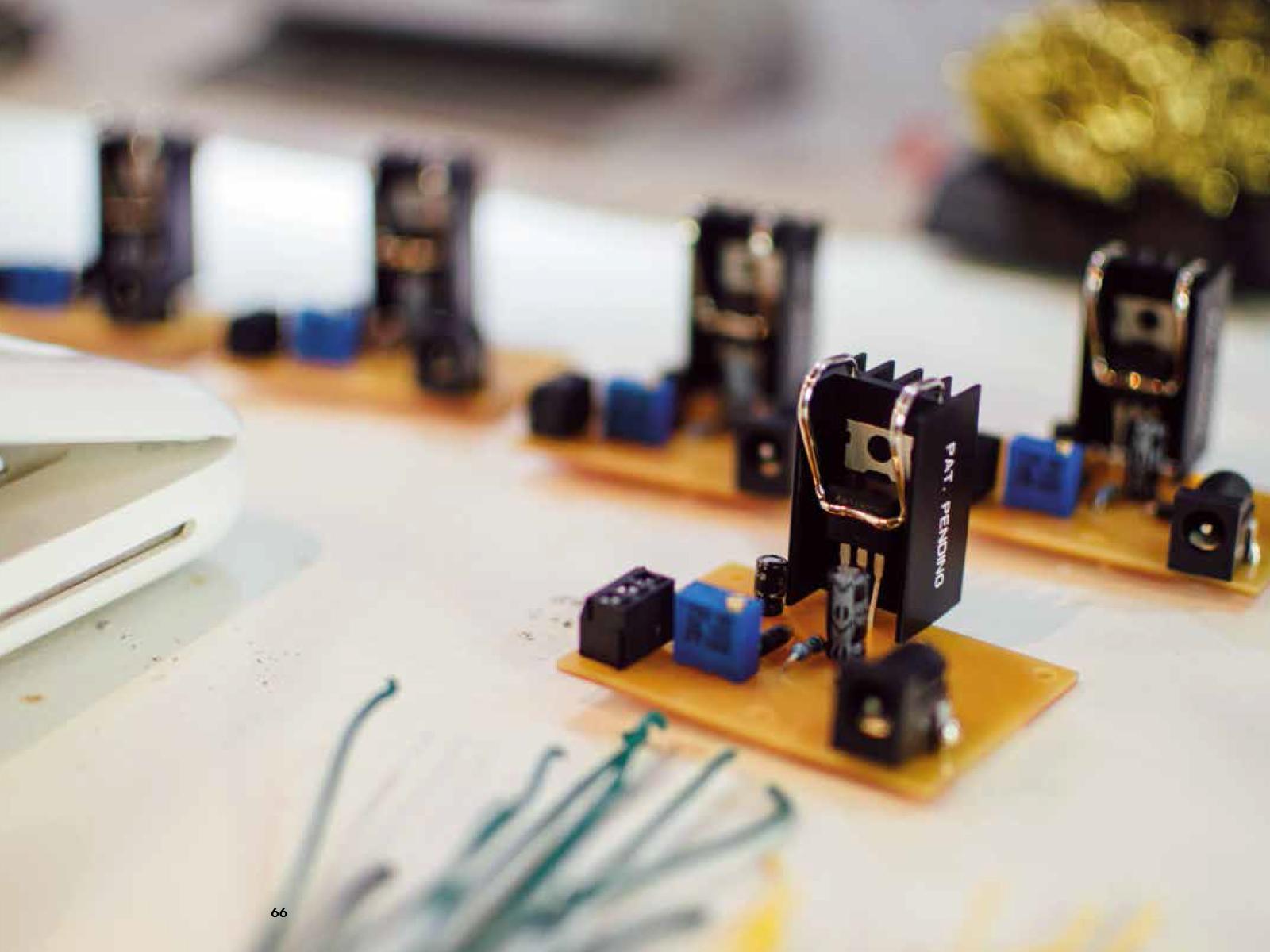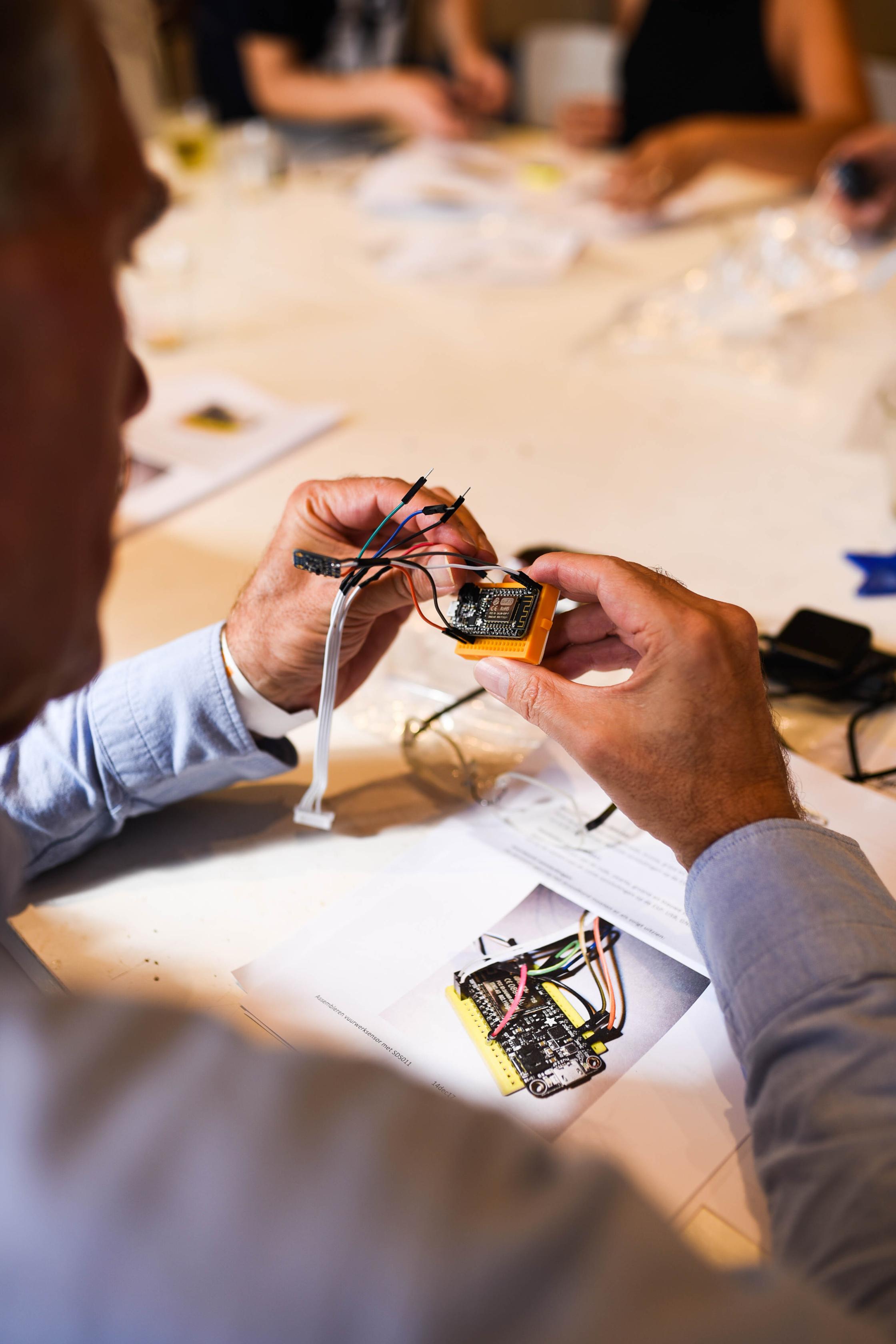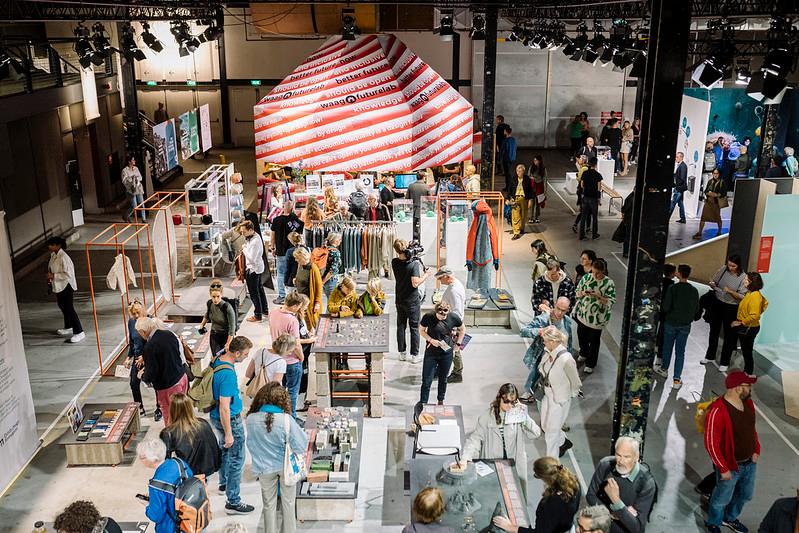In Transforming Citizen Sensing, Waag and Sodaq aim to co-create an air quality sensor for citizens worldwide based on their own experiences, to measure air pollution across borders. Transforming Citizen Sensing is part of Open Next, a European project that seeks to bridge the gap between communities and companies by highlighting the value of open source technology, in particular within the maker movement. The wider adoption of open source hardware is a key component of the Open Next project, building on lessons learned from the open source software movement. Not only should hardware be transparent, accessible and reproducible, but open source hardware also focuses on a participatory and community-driven design process. As transparency is a vital aspect of Open Next, and therefore of Transforming Citizen Sensing, it is desired that we are open about our ways of working throughout the entire design process of the sensing device. Therefore, this article gives insight in how we set up the interview phase and what the outcomes have been.
Interviews
Before going into the technical aspects of a sensing device prototype, it is crucial to understand the user case in which the technology will be deployed at the service of the communities. By interviewing potential users we get a better sense of the application aspects of the communities and the citizens who are involved, and thereby understand in depth the needs of the cases. Also, for efficiency reasons it is useful to understand the similarities and differences between the cases.
As we aim to involve everyone concerned with the issue, we spoke with citizens, organisations, developers, environmental agencies, and government representatives: Repke De Vries is monitoring and data specialist and part of Hollandse Luchten community, Gerard van Zelst is the ‘community hero’ of Hollandse Luchten, Paolo Bonelli is a sensor maker from Fablab WeMake, Dieter Pientka is a volunteer at Stichting HoutrookVrij, Joost Wesseling is a senior researcher at RIVM, Jan Hein Brouwer dedicates to air quality and sound pollution at the province of South Holland, and Roel de Loo develops solutions together with communities at SPSS.
During the interviews, we discussed the user’s motivation, the technical aspects, and the collaboration opportunities. We thereby talked about the experience of previous built sensing devices, such as the HoLu kit, AirRohr, and Sniffer Bike. Even if the kits are different, they share some common challenges we will be faced with in the deployment of our device. We asked all interviewees about their goals and motivations. A much heard concern is the lack of trust among citizens regarding official or governmental air quality data. This creates a motivation to invite citizens in the design, development and measurement process. We also discussed the ideas about the collaboration and openness of the development. It seems evident that both governments and citizens do not want a ‘black box’: they need to know and understand what is inside sensor kits. Therefore both the development and the actual use of the kits need to be a collaborative effort. The interview outcomes led us to defining two use scenarios, a range of technical requirements, and a list of design questions.
Scenario 1: Campaign for Public Understanding.
The first scenario is characterised by the need and wish to investigate and collect information about the air quality as a common good. That means for the sake of the individual and the community, but also to improve the communication with local government. The motivations that guide such activity can vary and they can be applied to different environmental conditions. The concern can be related to changes in the neighbourhood, such as the construction of new traffic roads or new buildings; the air monitoring is led by the wish to get a deeper understanding of how the area develops, for better or worse. The concern can also be related to the effect of air pollution on health conditions such as Asthma, and the worries for the exposure to active sources of pollution, such as wood fire in urban parks and private gardens. The measuring of air quality would help the individual to avoid pollution but also to gain a more transparent and useful communication with the local municipality. Another reason for concern is a general lack of interest and awareness, within citizens and public sectors like healthcare (outside the Netherlands). The lack of information about the possibilities to measure air quality with low cost tools, the skepticism of environmental agencies about citizen science, or the absence of the information and attention to the effects of polluted air on health are concerns that ask for campaign and actions.
Under this scenario, inspired by the interviews and the conference, different cases can be identified:
- Case 1: Campaign to gain knowledge of the changing environment of your neighbourhood.
- Case 2: Campaign for individual behavioural changes and open a conversation with the local municipality.
- Case 3: Campaign to create awareness of air pollution, and the possibilities of measuring air quality.

Scenario 2: Campaign for Systematic Change on Management level
The second scenario focuses on driving systematic change at an organisational level to improve management of the local environment in cities. Currently there is a disparity between government and the public regarding how environmental data should be communicated and made available. Furthermore, local communities are not receiving the support they believe they should receive when it comes to pollution generated by nearby industrial sites or private institutions. Resultantly the goal of this measuring scenario is to equip citizens with scientifically robust tools, information, and cooperative structures. This will allow them to initiate a dialogue with the local government on improving environmental policies, and increasing pressure on private institutions to effectively manage their pollution to avoid significant health impacts on society.

Sensing devices and data
In the interviews, we also discussed the technical aspects of hardware and data. It was said that currently the quality and usability of devices is often seen as poor, while also being too expensive. In order to enable widespread measurement, the device should be sturdy, affordable, and easy to use. More specifically for the HoLu and AirRohr kits, the wireless communication methods such as WiFi and Lora technologies seemed to cause problems. In one case the user had difficulties connecting the device to the local network at home, and in another case the missing coverage of the Lora Network did not allow for a connection at all. Another issue was the devices being too high-maintenance. Due to oxidation of the circuit board or broken sensors, users lost interest in the device and the collected data. In both the cases, the sensing devices are powered by a USB cable plugged to a wall socket, and this is regarded as a strong limitation in the application field of such devices and an aspect that the interviewed people would like to improve. Another aspect that would require an improvement is the calibration process of the gas sensor, in the case of the extended HoLu kit. The sniffer bike is different from the previous cases, as it includes a particulate matter sensor which can easily be attached to a bike’s handlebars and it uses LTE-M network to transmit the data. There was found a limitation of the collected data, as the device measures only when it is in motion so the measurements that happen while standing still are not used.
In general, using open source tools is regarded advantageous, as one can actually create its own device adapted to a specific application. For instance, in the case of the ProMicroLoRa printed circuit board used in weather stations, it hosts a microcontroller and a radio module. By making use of the Lora Radio, the device can function as both transmitter and receiver, creating its own network. Taking into account the benefits of open source, it was said that also the data and the visualisation methodology need to be open. Because the data needs to be always accessible, we should not have to rely on it being hosted by the government. Furthermore there needs to be a capability to compare it to official measuring stations in order to verify the quality of the data. Even if the European specifications of air quality are expressed as average over time, and the data often needs calibration, it is relevant to have access to the real time raw data to be able to apply a scientific approach to the data analysis and guarantee full transparency of the process. Additionally, in order to get a full overview of the possible influences, the air quality data should be combined with other weather data on the same platform.
Design questions
We hope to have given a clear insight to the interview phase of the project. We learned a lot talking with all the inspiring people in the interviews, and see many possibilities in designing an air quality sensing device. However we should keep in mind the challenges that come along. Therefore, we formulate design questions that will guide us during the Design Sprint.
- What quality of measurements is required to identify and communicate your concern?
- How should the data be managed and processed to fully accomplish the desired impact?
- How can we guarantee that the device collects and transmits the data in a straightforward way, without the worry that the infrastructure will not be available?
- How can we optimise the use of the data collected by the device?
- What kind of data do we desire, and how can we guarantee the usability over time?
- Who should be responsible for the device?
- How can we guarantee and respect fundamental criteria such as openness and affordability of hardware, and accessibility of data?


